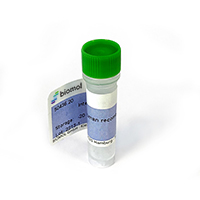Cookie preferences
This website uses cookies, which are necessary for the technical operation of the website and are always set. Other cookies, which increase the comfort when using this website, are used for direct advertising or to facilitate interaction with other websites and social networks, are only set with your consent.
Configuration
Technically required
These cookies are necessary for the basic functions of the shop.
"Allow all cookies" cookie
"Decline all cookies" cookie
CSRF token
Cookie preferences
Currency change
Customer-specific caching
FACT-Finder tracking
Individual prices
Selected shop
Session
Comfort functions
These cookies are used to make the shopping experience even more appealing, for example for the recognition of the visitor.
Note
Show the facebook fanpage in the right blod sidebar
Statistics & Tracking
Affiliate program
Conversion and usertracking via Google Tag Manager
Track device being used

| Item number | Size | Datasheet | Manual | SDS | Delivery time | Quantity | Price |
|---|---|---|---|---|---|---|---|
| ABE-32-7019-10 | 10 µg | - | - |
3 - 11 business days* |
358.00€
|
||
| ABE-32-7019-50 | 50 µg | - | - |
3 - 11 business days* |
387.00€
|
If you have any questions, please use our Contact Form.
You can also order by e-mail: info@biomol.com
Larger quantity required? Request bulk
You can also order by e-mail: info@biomol.com
Larger quantity required? Request bulk
Source: E.coli. MW :9.1kD. Recombinant Human LR3-IGF-1 is produced by our E.coli expression... more
Product information "Recombinant Human LR3 Insulin-Like Growth Factor I/LR3-IGF-1 (MG)"
Source: E.coli. MW :9.1kD. Recombinant Human LR3-IGF-1 is produced by our E.coli expression system and the target gene encoding Gly49-Ala118 is expressed. Insulin-like growth factor I (IGF1) belongs to the family of insulin-like growth factors that are structurally homologous to proinsulin. Mature IGFs are generated by proteolytic processing of inactive precursor proteins, which contains the N- and C-terminal propeptide regions. Mature human IGF-I consisting of 70 amino acids has 94% identity with mouse IGF-I and exhibits cross-species activity. IGF-1 binds IGF-IR, IGF-IIR, and the insulin receptor and plays a key role in cell cycle progression, cell proliferation and tumor progression. IGF-1 expression is regulated by growth hormone. R3 IGF-1 is an 83 amino acid analog of IGF-1 comprising the complete human IGF-1 sequence with the substitution of an Arg (R) for the Glu(E) at position three, hence R3, and a 13 amino acid extension peptide at the N terminus. R3 IGF-1 has been produced with the purpose of increasing biological activity. R3 IGF-1 is significantly more potent than human IGF-I in vitro. Protein function: The insulin-like growth factors, isolated from plasma, are structurally and functionally related to insulin but have a much higher growth-promoting activity. May be a physiological regulator of [1-14C]-2-deoxy-D-glucose (2DG) transport and glycogen synthesis in osteoblasts. Stimulates glucose transport in bone-derived osteoblastic (PyMS) cells and is effective at much lower concentrations than insulin, not only regarding glycogen and DNA synthesis but also with regard to enhancing glucose uptake. May play a role in synapse maturation (PubMed:21076856, PubMed:24132240). Ca(2+)-dependent exocytosis of IGF1 is required for sensory perception of smell in the olfactory bulb. Acts as a ligand for IGF1R. Binds to the alpha subunit of IGF1R, leading to the activation of the intrinsic tyrosine kinase activity which autophosphorylates tyrosine residues in the beta subunit thus initiatiating a cascade of down- stream signaling events leading to activation of the PI3K-AKT/PKB and the Ras-MAPK pathways. Binds to integrins ITGAV:ITGB3 and ITGA6:ITGB4. Its binding to integrins and subsequent ternary complex formation with integrins and IGFR1 are essential for IGF1 signaling. Induces the phosphorylation and activation of IGFR1, MAPK3/ERK1, MAPK1/ERK2 and AKT1 (PubMed:19578119, PubMed:22351760, PubMed:23696648, PubMed:23243309). [The UniProt Consortium]
| Supplier: | Abeomics |
| Supplier-Nr: | 32-7019 |
Properties
| Conjugate: | No |
Database Information
| KEGG ID : | K05459 | Matching products |
| UniProt ID : | P05019 | Matching products |
| Gene ID : | GeneID 3479 | Matching products |
Handling & Safety
| Storage: | +20°C |
| Shipping: | +20°C (International: +20°C) |
Caution
Our products are for laboratory research use only: Not for administration to humans!
Our products are for laboratory research use only: Not for administration to humans!
Information about the product reference will follow.
more
You will get a certificate here
Viewed



